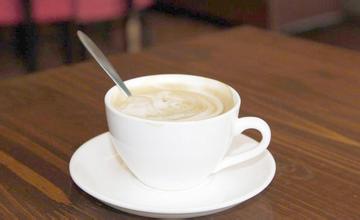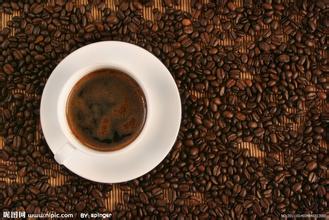Introduction to the characteristics of Flavor Grinding of Indonesian Gold Mantenin Flavor Coffee with Taste treatment method
Indonesian gold Mantenin coffee beans
1. Deep baking in conventional baking degree: rich and mellow, bitterness is obvious, chocolate and slightly sweet are more prominent, licorice is obvious, fruit acidity is weak, smooth feeling is general, strong aroma but poor richness.
two。 Medium baking: the sense of balance is very good, the yellow man under this baking degree can be said to be a little less MAN, but a little more soft, the taste is purer than the medium-deep baking, but the mellow feeling is still good, the smooth feeling is obviously better than the medium-deep baking, the bitterness still belongs to the more prominent range, but it is obviously weaker than the medium-deep baking, and the fruit acidity is obviously improved.
3. Medium-shallow baking: the yellow man under this baking degree is the most entangled by the editor, and the love is neither hated nor hated. If the yellow man under the medium depth is bitter, the yellow man under the medium-shallow baking is the peak of the acidity that the editor can bear, but. However, it is really smooth, the acidity is obvious, but the entrance is very comfortable, there is a feeling of birth on both sides of the mouth, moreover, Huang Man's sense of MAN has disappeared, Huang Man is also a little fresh.
Mantenin raw bean
So the question is, what kind of roasted coffee beans should our factory produce to meet the different needs of coffee lovers?
The answer is that the factory can only choose moderate deep baking, according to brand positioning, there is no way to change according to each individual, only our understanding of coffee, and then suit the taste of most people, to maximize to show the flavor of Mantenin, we certainly will not have the same taste as other manufacturers, this is absolutely impossible, we have our own characteristics, have our unique understanding of coffee.

Important Notice :
前街咖啡 FrontStreet Coffee has moved to new addredd:
FrontStreet Coffee Address: 315,Donghua East Road,GuangZhou
Tel:020 38364473
- Prev

Introduction to the characteristics of the description method of taste and flavor of honey kiss 90 + 90 boutique coffee beans
Honey kiss 90 plus coffee flavor NEKISSE comes from Shakisso. as early as 2008, 90 honey kiss N2 L12 Ninety Plus 90 Nekisse N2 L12 Origin: Ethiopia: Wellega and Sidama regions varieties: Heirloom producer / company: United States 90 altitude: 1200Melet 1700m rainfall: 1500mm/ annual average annual temperature: 1431 degrees Celsius
- Next

Introduction of grinding degree production area of Ethiopian coffee varieties by taste and flavor description method
Ethiopian coffee beans are new coffee beans with high water content, so they need to be roasted a little deeper. They are roasted over low heat to the city to bake city, the surface is slightly oiled, and the beans are brown. After baking, Gemma feels crisp and loose after grinding, and it takes a long time to finish the last point of grinding. It may be that the beans are light and not easy to get down. The dry aroma of Gemma coffee powder:
Related
- Detailed explanation of Jadeite planting Land in Panamanian Jadeite Manor introduction to the grading system of Jadeite competitive bidding, Red bid, Green bid and Rose Summer
- Story of Coffee planting in Brenka region of Costa Rica Stonehenge Manor anaerobic heavy honey treatment of flavor mouth
- What's on the barrel of Blue Mountain Coffee beans?
- Can American coffee also pull flowers? How to use hot American style to pull out a good-looking pattern?
- Can you make a cold extract with coffee beans? What is the right proportion for cold-extracted coffee formula?
- Indonesian PWN Gold Mandrine Coffee Origin Features Flavor How to Chong? Mandolin coffee is American.
- A brief introduction to the flavor characteristics of Brazilian yellow bourbon coffee beans
- What is the effect of different water quality on the flavor of cold-extracted coffee? What kind of water is best for brewing coffee?
- Why do you think of Rose Summer whenever you mention Panamanian coffee?
- Introduction to the characteristics of authentic blue mountain coffee bean producing areas? What is the CIB Coffee Authority in Jamaica?

